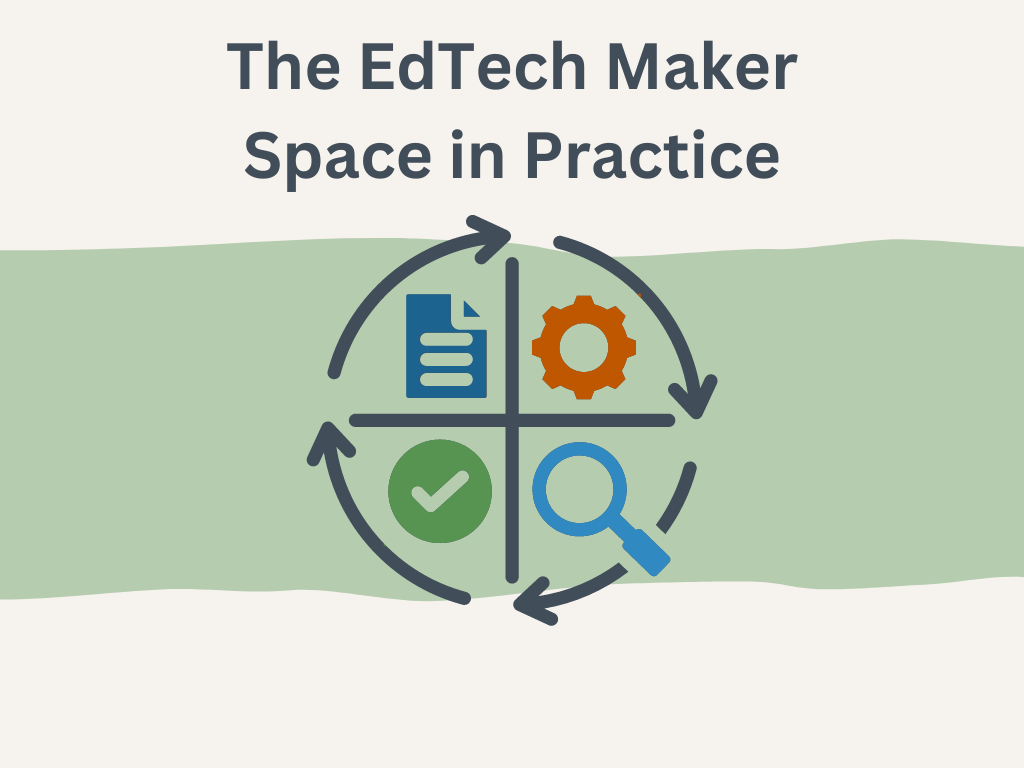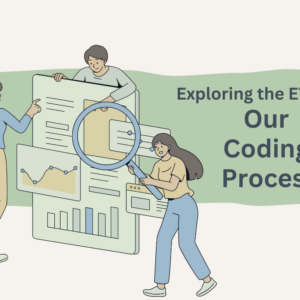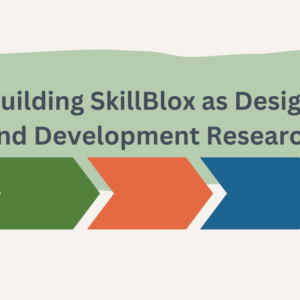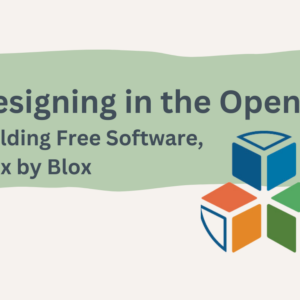By Rachel Riggs and Jen Vanek
In the Teaching Skills That Matter-SkillBlox Instructional Support Pilot, our research partners at AIRⓇ found that teachers needed a variety of resources to support their implementation of the Teaching Skills That Matter (TSTM) framework, an instructional framework that outlines the integration of nine “skills that matter” for adult learners (Cronen et al., 2023). We responded to this need in the design and development phase of the project. We increased the availability of a variety of resources by offering professional development (PD) called The EdTech Maker Space (ETMS). In this PD model, teachers learn by doing. More specifically, the aim of the ETMS is to integrate new knowledge and skills related to edtech implementation in a project-based, service learning PD experience to generate reusable open educational resources (OER). ETMSs are grounded in the rich theoretical foundation of experiential learning and situated learning (see EdTech Maker Space Service-Learning Experiences for more about the theoretical foundation of this model).
The ETMS blends the creation of OER with training teachers to design and/or implement these resources using technology. This approach fosters a unique professional learning environment where volunteer “Makers” not only contribute to the development of educational resources but also gain valuable skills in edtech and instructional design, embodying a dynamic model of community service and professional growth.
The EdTech Maker Space has served multiple roles in this project. Firstly, the ETMS supports the generation and alignment of OER to TSTM skills and topics so that teachers who use SkillBlox are able to easily discover and use the resources with learners. Additionally, engaging teachers in training on the thoughtful design of TSTM-aligned OER through the ETMS deepened their knowledge of TSTM and offered valuable insights into the support educators need to effectively implement TSTM — both with and without support from SkillBlox. Finally, teacher engagement has helped to inform the kind of content and features needed in SkillBlox to support teachers in their TSTM instruction.
The ETMS in Action
The ETMS model combines service, learning, and collaboration. While the model can be designed and facilitated in a variety of ways, using a variety of tools, we share the process we used in this project. Each ETMS started with an information session to set expectations, followed by a promotional period to recruit volunteer participants through various channels, including social media, newsletters, and direct outreach. To sign up, Makers filled out registration forms indicating their existing skills and knowledge, practice areas, and reasons for participating.
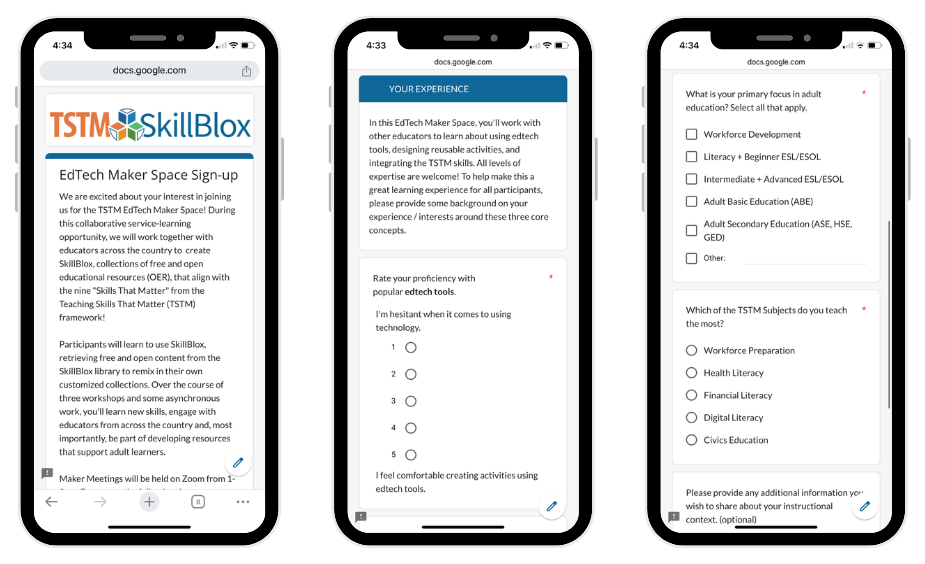
Soon after signing up, Makers were added to a Google Classroom through which the entire project was managed. Every ETMS had three synchronous sessions, typically spanning six weeks, facilitated on Zoom. The synchronous sessions were infused with learning from subject matter experts and collaborative group activities, all in preparation for the asynchronous work that followed.
Through the implementation of the ETMS in the TSTM-SkillBlox research, we uncovered key insights that will inform our future facilitation:
Strategic Grouping
When grouping was well-aligned with participant context and goals, it fostered collaboration. Makers noted that rich collaboration motivated them to participate, and therefore, strategic grouping needed to be a priority in planning. Across the five ETMSs, we tried various ways of grouping participants, including by topic areas, core subjects, and OER generation activities.
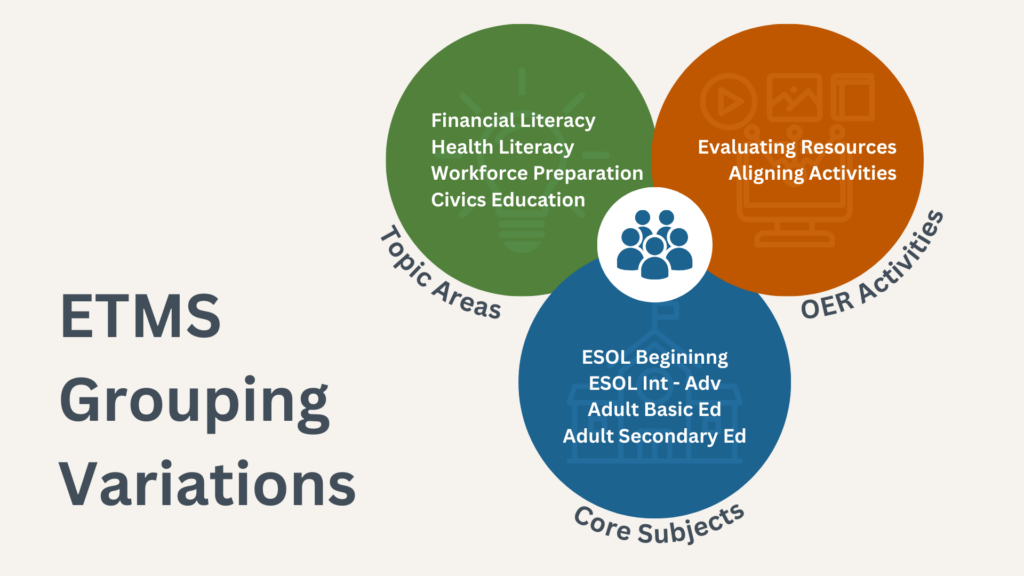
We noticed that the strategic grouping of participants seemed associated with motivation, engagement, and their success reaching the project goals. Similarly, grouping by core subjects and levels (ESOL Beginning, e.g.) appeared to encourage collaboration because teachers could discuss shared challenges and practices. Grouping by TSTM topics appeared to help Makers make explicit connections between the TSTM framework and their existing practice. Finally, our count of the activities generated in our ETMSs, showed that grouping by OER generation activities yielded the most OER to add to the SkillBlox platform.
Peer Leaders
In some ETMSs, we introduced peer leaders to help facilitate breakout room discussions. Coordinating with the peer leaders required more prep time, adding tasks such as creating breakout room facilitation guides and outreach to the peer leaders between sessions. Ultimately, we saw that peer leaders appeared to add value to the projects, fostering a strong sense of community and providing timely feedback to Makers.
Showcasing Results
Because the ETMS is a practical, project-based approach aiming to maximize sharing and reusability, we prioritized a final showcase in which Makers shared what they learned and created. Showcases were facilitated in various ways, including a public portion of a final ETMS meeting in which we promoted the event to other educators, and Makers presented their progress. We also encouraged Makers to join and participate in other events, including conferences and webinars in which we shared updates on the project, like the “Curating Free Online Resources” EdTech Strategy Session lightning talk. While each has pros and cons, inviting others to a final ETMS meeting was an exciting and collaborative way to conduct the showcase.
Learning and Making
The EdTech Maker Space is unique in its balance between learning and doing, with the ultimate aim of learning by doing. Using this model, we were able to engage educators in a series of enriching activities that blended skill development with the creation of practical resources. Across the five ETMSs we ran, over 100 educators learned about TSTM topics and skills, OER evaluation criteria, and designing quality OER. Key outputs of these activities will support educators beyond these participants. They include:
- the evaluation and alignment of over 500 free educational activities, now available in SkillBlox, evaluated using a Resource Evaluation Guide and aligned to frameworks that support the integration of TSTM topics (financial literacy, health literacy, workforce preparation, and civics education*), both of which were co-created by participants
- the co-creation of an Activity Design Guide
- deeper collective understanding of which edtech tools lend themselves to the generation of accessible and adaptable OER (see Defining “Open” in OER for more information)
- and 65 original, reusable instructional activities designed to maximize learning of the essential skills that are the core of TSTM
- insights into which existing instructional routines support the development of TSTM skills, as illustrated in the image below
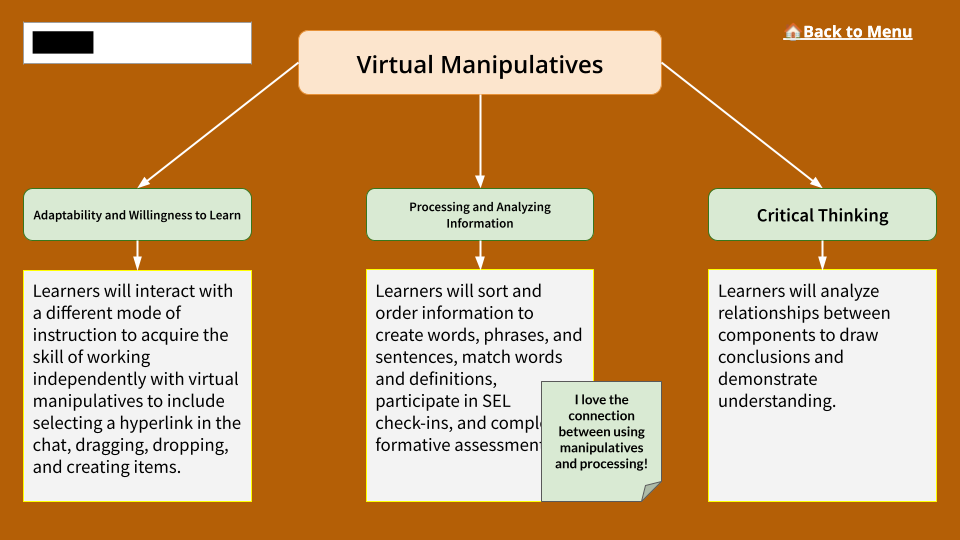
The TSTM-SkillBlox research has examined and will continue to investigate the potential for SkillBlox to support the implementation of the TSTM framework, addressing the needs of teachers and students to have access to quality, relevant content. Within the TSTM-SkillBlox research, the TSTM framework, SkillBlox platform, and EdTech Maker Space model work together to spark meaningful improvements in adult education — with the EdTech Maker Space offering teachers opportunities to develop new skills and inspiration to impact their relationships with students and instructional content.
*Digital Literacy is the fifth TSTM topic, but we did not include this activity because digital literacy resources had already been curated in the Digital Resilience in the American Workforce project and are available in the CrowdEd Digital Skills Library.
References
Cronen, S., Nanda, N., Talwar, A., White, C., Smith, D., Movit, M., Moore, C. (2023). Promising Practices and Lessons Learned from Early Implementation of the TSTM Framework. AIR. https://createadultskills.org/system/files/TSTMSklbxImplStdyRprt-508_0.pdf
Wiley, D., Bliss, T. J., & McEwen, M. (2014). Open educational resources: A review of the literature. In J. M. Spector, M. D. Merrill, J. Elen, & M. J. Bishop (Eds.), Handbook of Research on Educational Communications and Technology (pp. 781–789). Springer. https://doi.org/10.1007/978-1-4614-3185-5_63

